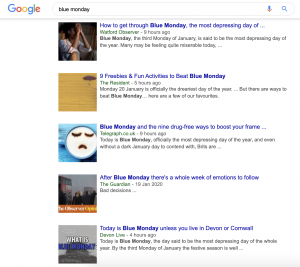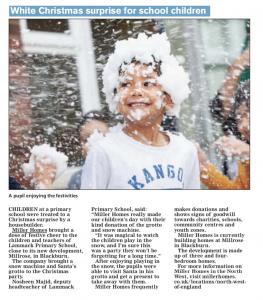RANDOM ACTS OF KINDNESS DAY: HOW CAN BRANDS GET INVOLVED?
February 17th is Random Acts of Kindness Day in the UK, and ever interested in Awareness Days and how they can be leveraged in PR and Marketing campaigns, we thought we’d take a look at how brands can get involved.
The Source are an ethical PR and marketing agency, we’re heavily invested in the rural community and work with brands who care deeply about their CSR and reputation. As such, days like Random Acts of Kindness Day are the exact kind of events that we’d look to include in our PR strategies.
Here’s a little more on why exactly we do this…
Managing CSR For Brands
PR is all about brand reputation, it’s building and maintaining an image for a business and positioning them as ethical and responsibility. CSR (Corporate Social Responsibility) plays a huge part in this. For us, we like to make sure that the brands we work with are well versed in being involved with local communities and that support charities too.
It’s really important for your brand to have a great CSR strategy, as this can make or break your business’ reputation. Days such as Random Acts of Kindness Day can help to do exactly this…
How To Get Involved In Random Acts Of Kindness Day
Random Acts of Kindness Day is just one of the many Awareness Days worth getting involved in if you’re wanting to improve your brands CSR and overall reputation. What’s more, these kinds of Awareness Days are abundantly spoken about in the media, so it’s also a great PR and marketing opportunity for getting your brand some media coverage too.
Here’s some of our ideas as to how your brand can get involved in Random Acts of Kindness Day this year:
- Donate some money to a local charity, such as an animal shelter or food bank. Don’t pre-plan the donation, just head in and leave a cheque (and ask if they wouldn’t mind a quick photo, of course).
- Get some of your team out doing a litter pick or beach clean-up, showing kindness to the environment and to the earth.
- Visit a local nursing home or children’s hospital and drop off some bits and bobs that you’ll know they’d love. This one might be a little harder to be ‘random’ as you’ll probably have to get in touch with a co-ordinator first, but it’s still a kind thing to do.
- Email a small business or charity and offer an hour or two of your services for free, they won’t be expecting an email like that and if you work in a service-led industry (such as PR like us) that extra hour or two might benefit their business more than you could ever anticipate.
- Ask your staff members to bring in a few items of food, or some clothing that can be donated either to a local food bank or charity shelter, helping out small businesses is a really nice idea for Random Acts of Kindness Day.
- Shout about a small business on social media, if you have a great online presence – this could mean a world of difference to them in getting them some great exposure for their brand. Take for example the ‘Hinch Effect’, not too long-ago famed influencer Mrs. Hinch posted a story of the company who fitted her a loft ladder. And the results, well, click here to find out what happened.
Want help utilising strategies like the above, and turning your kindness into coverage, as well as a strong brand image? Get in touch with The Source to find out a little more about what we do, and how the ‘Sorcerers’ can support your brand’s marketing strategy.
Call us on 01829 720789. Or, see what we get up to on social…
Instagram: @PRSource
Twitter: @Source_Tweets
Facebook: Source PR
LinkedIn: The Source









